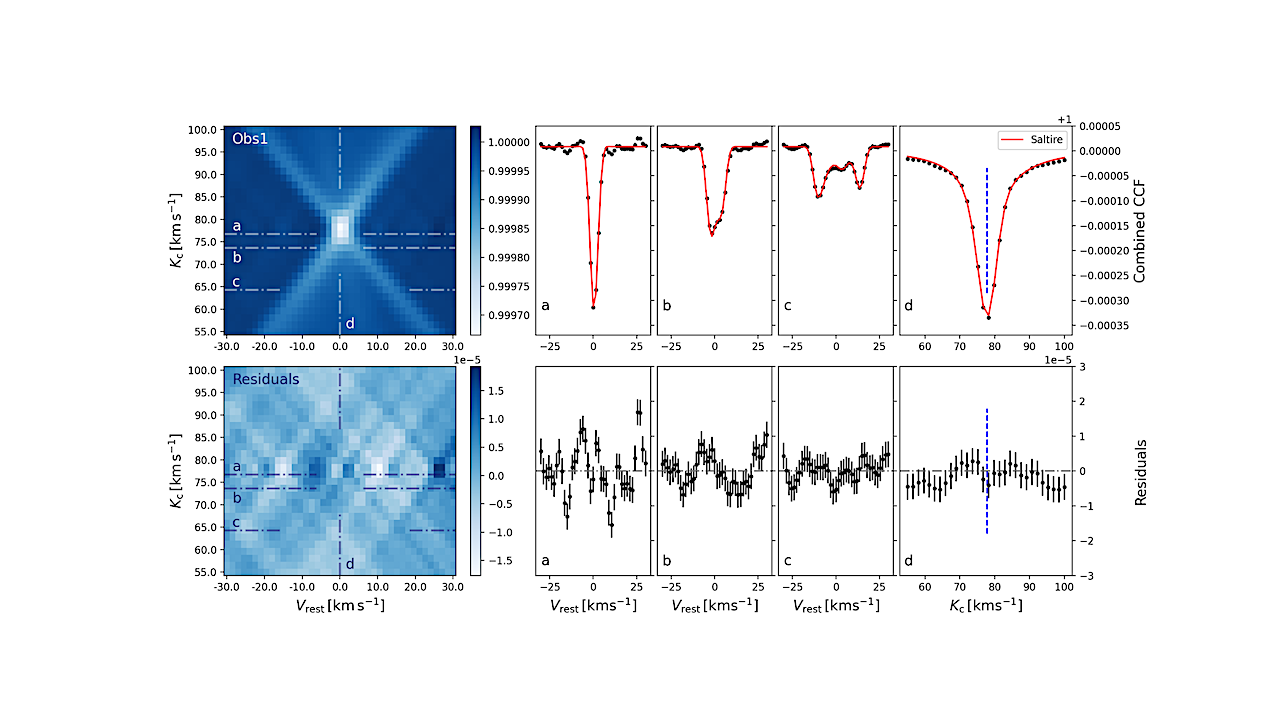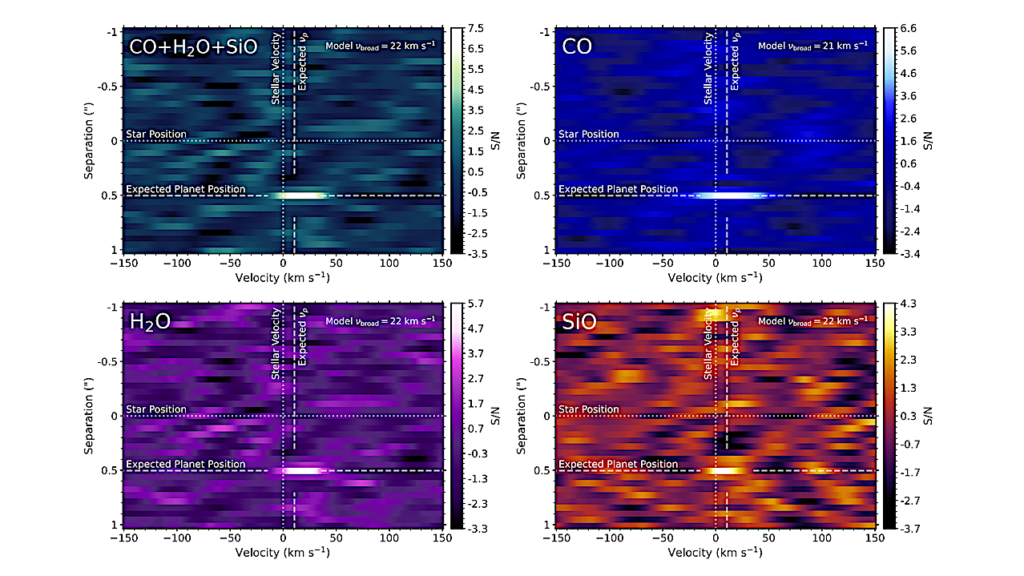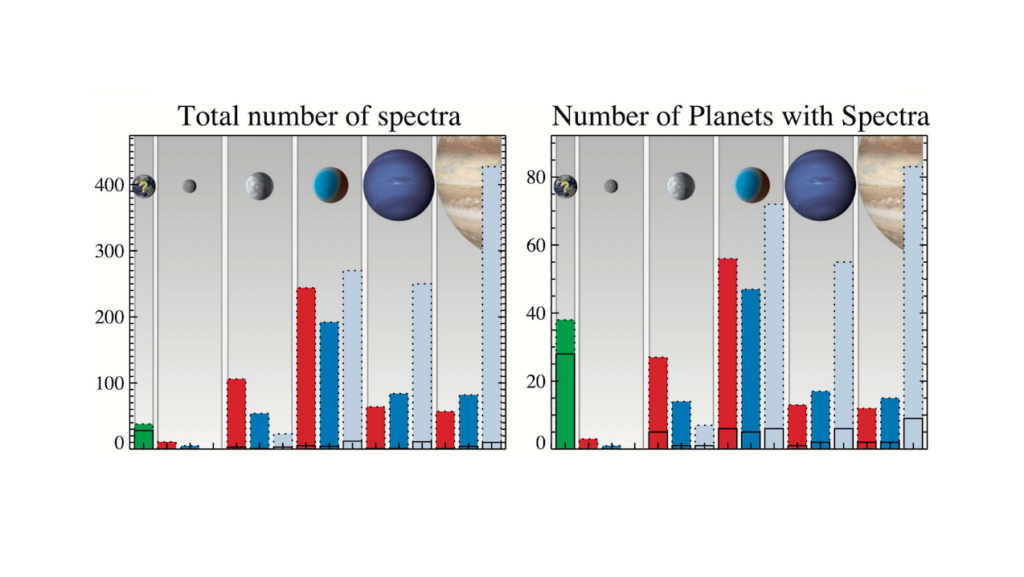Saltire — A Model To Measure Dynamical Masses For High-contrast Binaries And Exoplanets With High-resolution Spectroscopy

High-resolution cross-correlation methods are widely used to discover and to characterise atomic and molecular species in exoplanet atmospheres. The characteristic cross-correlation signal is typically represented as a function of the velocity of the system, and the semi-amplitude of the planet’s orbit.
We present Saltire, a fast and simple model that accurately reproduces the shape of such cross-correlation signals, allowing a direct fit to the data by using a minimum set of parameters. We show how to use this model on the detection of atmospheric CO in archival data of the hot Jupiter tau Bootis b, and how Saltire can be used to estimate the semi-amplitude and rest velocity of high brightness-ratio binaries.
By including the shape of the signal, we demonstrate that our model allows to robustly derive the signal position up to 10 times more accurate, compared to conventional methods. Furthermore, we discuss the impact of correlated noise and demonstrate that Saltire is a robust tool for estimating systematic uncertainties on the signal position.
Saltire opens a new door to analyse high signal-to-noise data to accurately study atmospheric dynamics and to measure precise dynamical masses for exoplanets and faint stellar companions. We show, that the phase-resolved shape of the atmospheric CCF signal can accurately be reproduced, allowing studies of phase-dependent signal changes and to disentangle them from noise and data aliases.
Daniel Sebastian, Amaury H.M.J. Triaud, Matteo Brogi
Comments: 16 pages, 12 figures, accepted for publication in MNRAS
Subjects: Earth and Planetary Astrophysics (astro-ph.EP); Solar and Stellar Astrophysics (astro-ph.SR)
Cite as: arXiv:2312.01924 [astro-ph.EP] (or arXiv:2312.01924v1 [astro-ph.EP] for this version)
Submission history
From: Daniel Sebastian
[v1] Mon, 4 Dec 2023 14:31:11 UTC (3,123 KB)
https://arxiv.org/abs/2312.01924
Astrobiology,








